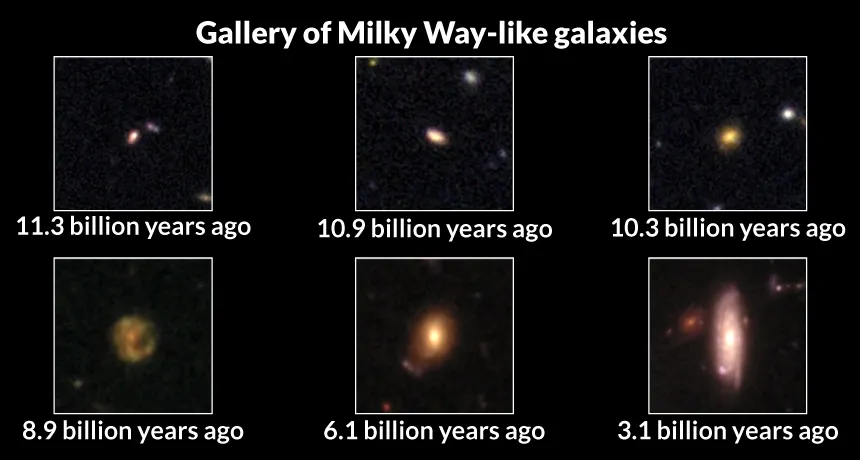A look back in time reveals Milky Way’s evolution
Distant galaxies offer clues to how our galaxy formed

TIME AND SPACE Galaxies at different distances from Earth, shown in these pictures from the Hubble Space Telescope, illustrate how the Milky Way has evolved over the last 11 billion years.
NASA, ESA, C. Papovich/Texas A&M Univ., H. Ferguson/STScI, S. Faber/Univ. of California, Santa Cruz and I. Labbé/Leiden Univ.







